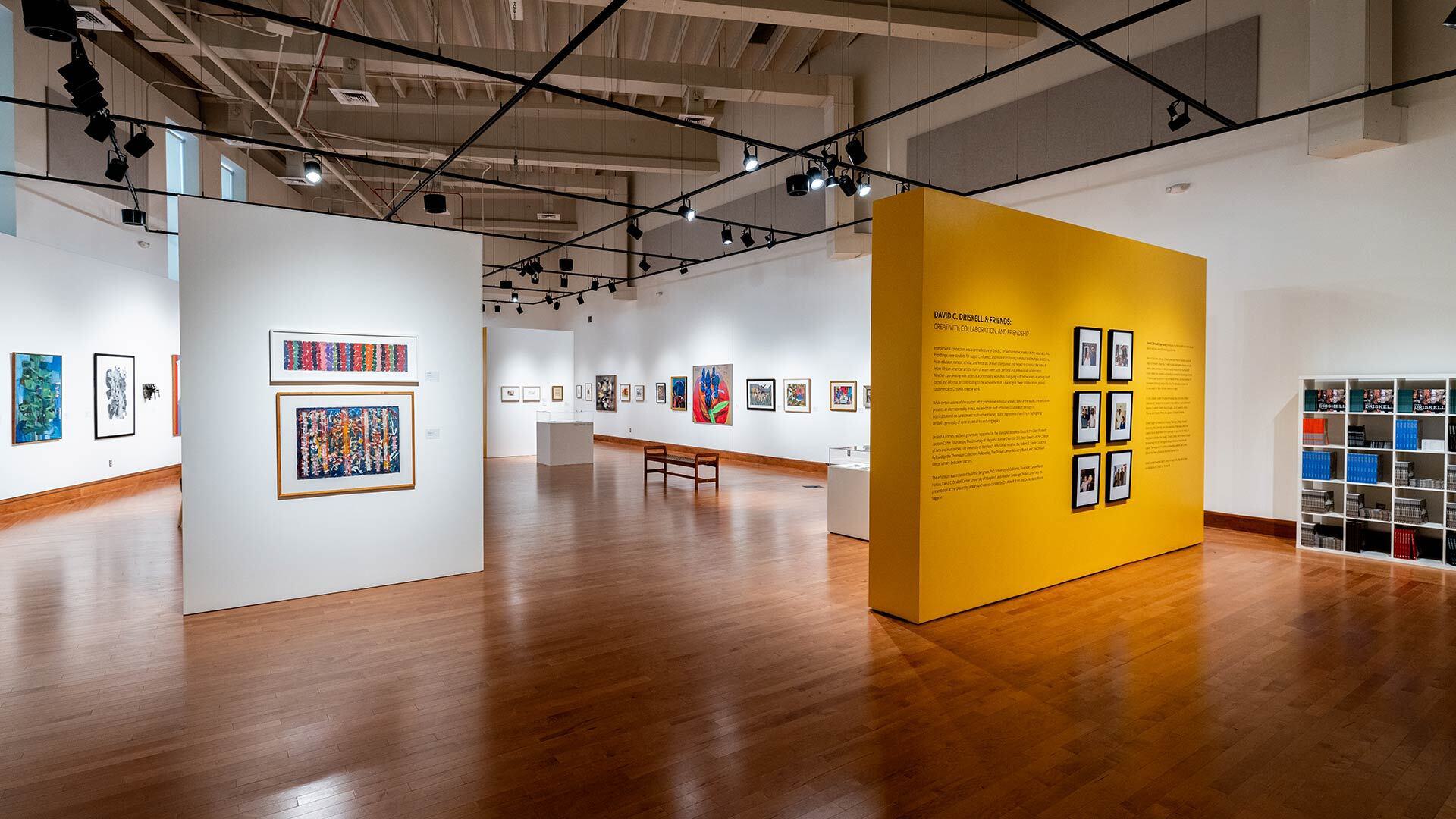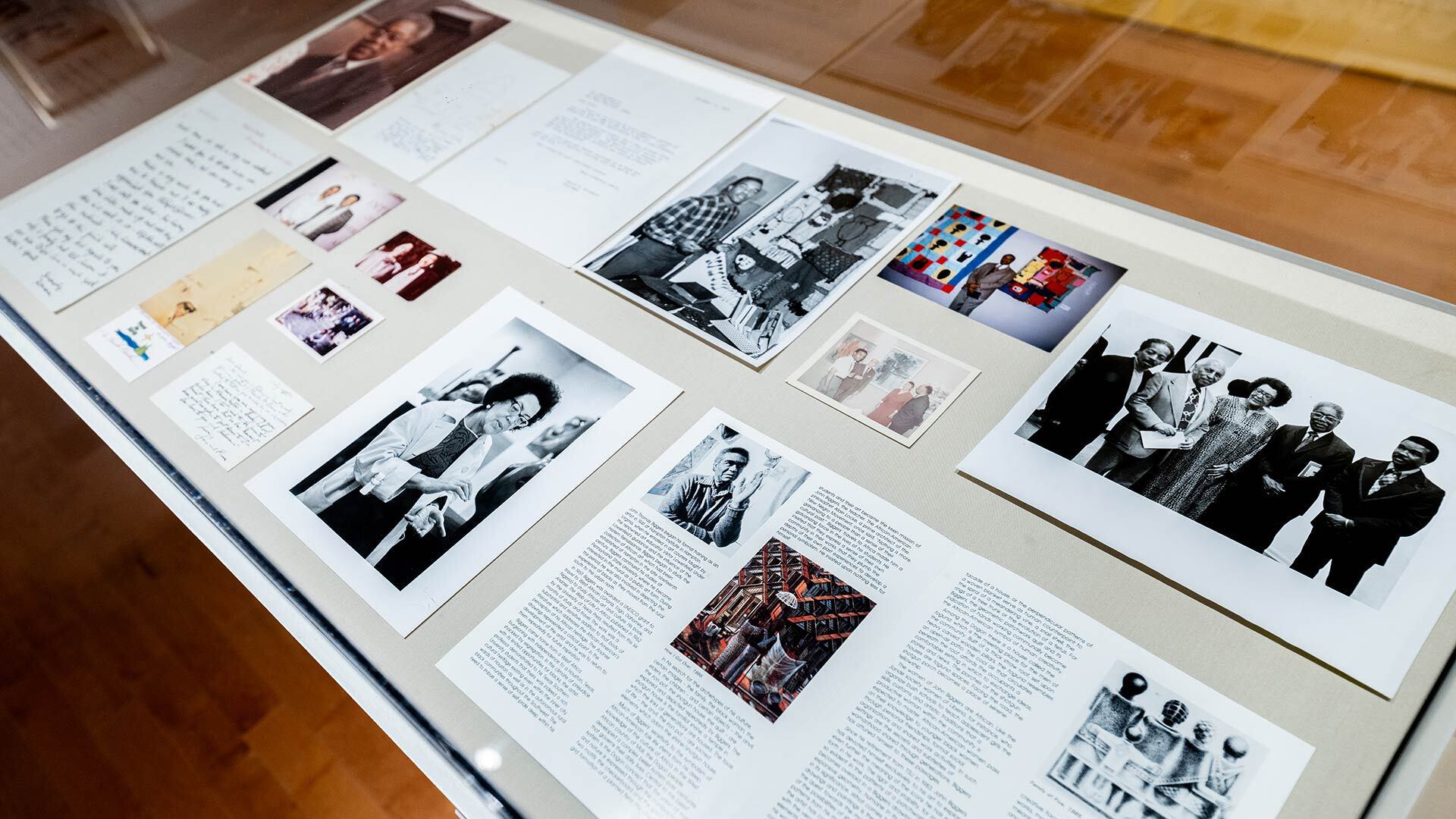Center of the Circle
New Driskell Center Exhibit Showcases Pioneering Artist’s Personal Relationships With Peers

"Untitled" by Alma Thomas (upper artwork, white wall at left) and "Five Blue Notes" by David C. Driskell (lower artwork) are among the pieces in "David C. Driskell and Friends: Creativity, Collaboration and Friendship." The new exhibit at UMD highlights how Driskell's social relationships with other artists shaped their work, and includes archival documents like photos and correspondence between the artists (below).
Photos by Jonathan Thorpe (c) David Driskell Center
If a person is judged by the company they keep, the late David C. Driskell might be hard to top.
Visitors will get to know Driskell and his personal circle of world-class artists at a new exhibit, “David C. Driskell and Friends: Creativity, Collaboration and Friendship,” opening Monday at the University of Maryland’s David C. Driskell Center. The show offers gallery-goers a glimpse at the personal relationships that Driskell cultivated with other artists, and the ways in which their works spoke to one another as a result.
“It foregrounds interpersonal connection as an animating force for (Driskell’s) artistic practice,” said Abby Eron, assistant director of exhibitions and programs at the Driskell Center.

Driskell, an artist, curator and UMD professor, was a towering figure in the field of African American art history; his friends included major artists like Alma Thomas, Jacob Lawrence and Romare Bearden. Archival materials on display humanize Driskell’s relationships with these artists; in one photo, the painter Keith Morrison dances in Driskell’s home.
“These were people who taught him, people whom he taught, people with whom he collaborated, and people who were his contemporaries working at the same 20th-century moment that he was,” said Eron.
Visitors entering the gallery are greeted by two paired works: Alma Thomas’ “Untitled” displayed on top of Driskell’s “Five Blue Notes.” Thomas was the first graduate of Howard University’s art program—the same program from which Driskell would graduate in 1955. They met while Driskell was at Howard, and he later wrote the introduction to her first retrospective exhibition.
“Untitled” and “Five Blue Notes” share a stripe effect; the look was Thomas’ signature, and she said she was inspired by the shadows cast by a holly tree outside her Washington, D.C., home. Driskell’s stripes, meanwhile, were linked to traditions like quilt-making and African strip weaving, but also to trees in a forest, one of his most beloved subjects. “They’re both looking at these natural forms and interpreting them,” said Eron.
Driskell’s simple pencil portrait of Lawrence—the painter most famous for his 1941 “Migration Series” depicting African Americans moving from the South to the North—also highlights the friendship between the two artists. In the drawing, Lawrence sits in a home, beside a bed. “Driskell would often invite Lawrence to his home in Maine,” said Eron. “This picture, in a domestic setting, indicates to me the closeness of their friendship.”
The 70-piece exhibit was curated by retired Driskell Center director Curlee Holton, along with colleagues from Wilkes University and the University of California, Riverside. Holton and Driskell “had a close working relationship,” said Eron. “When they were in the printmaking studio together, they’d refer to each other as Maestro.” Driskell died in April 2020 at age 88.
The Driskell Center is the exhibition’s third stop, after which it will travel on to other galleries. “All of the work is from the Driskell Center collection, so we’re happy to have it back here,” said Eron.